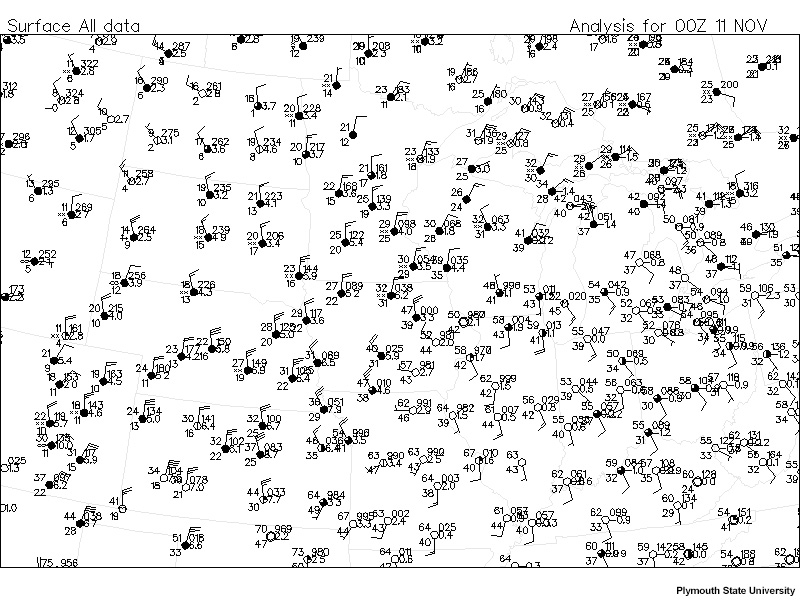Pre-Lab: Finding Fronts using Multiple Fields » Putting it All Together: Practice Examples with Station Observations » Cold Front
Example 2
We’ve already seen a cold front in the earlier examples. Here’s another one.
Question 1 of 1
Determine the location of any surface fronts by drawing them in with the pen tool(s). Available colors correspond to the standard color schemes mentioned in the introduction.

| Tool: | Tool Size: | Color: |
|---|---|---|
Here we can see a distinct temperature gradient running southwest to northeast across eastern Kansas over the IL-IA border and northward into MI, which coincides with a very significant wind shift. We can draw in the front beginning near the center of low pressure, which is identified by counterclockwise flow and a minimum in pressure near Davenport, IA. The front extends southwestward, separating the cold, dry air coming from the northwest from the much warmer, more moist air and light to southerly winds to the south and east. More dense observations would, of course, allow us to pinpoint the frontal location further. Here the front was drawn in this exact position taking into account temperature and moisture modification (areas in which the colder air is just arriving may have been quite warm and the cold air takes a bit to mix with the warmer air, thus not reflecting as cold of temperatures as you might expect with a true discontinuity. Additionally, the station may not report fully northwesterly winds yet, as the core of northwesterly or westerly flow often lies behind a pronounced axis of dilatation in which winds curve more counterclockwise (nearer the low) and more clockwise (near far end of cold front).
